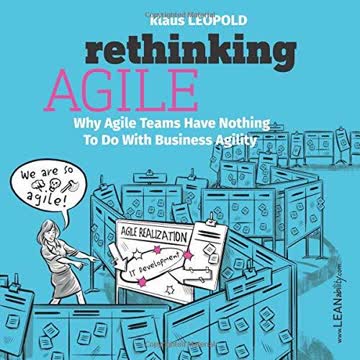Key Takeaways
1. Engage Learners from the Start: Connections Are Key
Connections are short, learner-focused opening activities that include the following four important elements: Connecting learners to other learners in positive and meaningful ways that are relevant to the training topic.
Create psychological safety. Begin training by engaging learners immediately in topic-related activities. This helps them connect with each other, the topic, their personal goals, and the learning outcomes. Use "Fast Pass" activities that take 1-2 minutes or longer "Start-Up" activities lasting 5-10 minutes. Examples include:
- Standing Survey: Learners ask each other topic-related questions
- Wall Writing: Pairs write topic-related facts on wall charts
- Table Talk: Small groups discuss a posted question
By fostering connections early, you create a learning community and increase motivation. This approach replaces traditional openings focused on housekeeping details, which can be covered later.
2. Deliver Content Effectively: Focus on Need-to-Know Information
You don't truly know how much your learners understand or remember until they explain, demonstrate, or teach what they have learned.
Prioritize essential content. When presenting concepts, focus on need-to-know information rather than nice-to-know details. Use these strategies to enhance retention:
- Provide graphic organizers for note-taking
- Apply the "ten-minute rule" by breaking content into short segments
- Use interactive lecture strategies to engage learners
- Include one-minute reviews between segments
Effective techniques:
- Rapid Response: Learners list key points or create test questions
- Pass That Card: Participants write and exchange topic-related questions
- Stand, Stretch, and Speak: Combine physical movement with content review
By involving learners actively in the content delivery, you deepen their understanding and retention of important information.
3. Encourage Active Participation: Let Learners Teach Each Other
When learners have a chance to review, discuss, or write down what they already know (or think they know) about the topic, they learn more because now any new information they learn during the training can be connected to the old, and the learning pathways in the brain are strengthened.
Leverage collective knowledge. Recognize that learners often know more than they realize. Use strategies that allow them to teach and learn from each other:
- Jigsaw activities: Divide content among groups, who then teach others
- Concept Centers: Create stations for learners to explore topics independently
- Teach-Back activities: Participants explain concepts to peers
Benefits of peer teaching:
- Deepens understanding for both "teacher" and "learner"
- Increases confidence and mastery
- Allows trainer to assess comprehension and clarify misconceptions
By stepping aside and facilitating peer learning, you create a more engaging and effective training experience.
4. Practice Makes Perfect: Concrete Application Reinforces Learning
A learning outcome is an action, an observable behavior demonstrated by the learner when the training is over. The learner does it; the trainer (or another person) can see it being done.
Prioritize hands-on practice. Concrete practice is essential for skill development and knowledge retention. Design activities that allow learners to apply what they've learned in realistic scenarios. Key elements include:
- Active participation by all learners
- Collaborative interdependence among learners
- Individual accountability
Effective practice strategies:
- In-Room Mentoring: Pair experienced and novice learners
- Rounds and Repetition: Groups practice procedural steps
- Table Demonstrations: Small groups present skills to the class
Remember that mistakes are a natural part of learning. Create a safe environment for learners to practice, make errors, and improve their skills or knowledge.
5. Conclude Meaningfully: Learner-Led Summaries and Celebrations
Conclusions help training participants pause, reflect on, and summarize what they have learned. Learners also assess their own learning, and make action plans to apply their new knowledge/skills after the training ends.
End on a high note. Craft conclusions that reinforce learning and create positive emotions. Include these elements:
- Learner-led summaries
- Self-evaluations
- Action plans for applying learning
- Celebrations of the learning journey
Effective conclusion activities:
- Learning Logs: Written reflections on key takeaways
- Where Do You Stand?: Physical positioning to show readiness to apply skills
- Make and Take: Creating tangible reminders of learning
- Circle Celebration: Sharing appreciations and commitments
By allowing learners to summarize, evaluate, and celebrate their own learning, you increase retention and motivation to apply new skills or knowledge.
6. Design with the End in Mind: Craft Clear Learning Outcomes
Learning outcomes help us stay on track as we tie everything in the training to these observable results. They become guideposts for ourselves as well as our learners.
Focus on observable behaviors. Write learning outcomes that describe what learners will be able to do after the training. Use this simple formula:
Behavior + Concept or Skill = Learning Outcome
Key principles:
- Use action words (e.g., demonstrate, perform, explain)
- Avoid vague terms like "know" or "understand"
- Tie outcomes to need-to-know information
Make learning outcomes an integral part of the training:
- Post them visibly
- Begin with an outcome-related activity
- Allow learners to create their own outcomes
- Refer to outcomes throughout the training
- End with an outcome-based assessment
By crafting clear, actionable learning outcomes, you provide a roadmap for both trainers and learners, ensuring that the training stays focused on its primary objectives.
7. Foster Collaborative Learning: The World Café Method
The World Cafe is designed primarily to generate collective knowledge-sharing, webs of personal relationships, and new possibilities for action.
Create meaningful conversations. The World Café is a flexible approach for hosting large group dialogues. It's particularly useful for:
- Generating new ideas
- Developing creative possibilities
- Deepening relationships and communication
- Engaging in creative problem-solving
Key principles:
- Set the context
- Create hospitable space
- Explore questions that matter
- Encourage everyone's contributions
- Connect diverse perspectives
- Listen together for insights
- Share collective discoveries
Implementation steps:
- Arrange small table groups with paper tablecloths and markers
- Pose relevant, open-ended questions
- Conduct multiple rounds of conversation, with participants switching tables
- Synthesize insights and identify patterns
- Share collective discoveries in a large group discussion
By using the World Café method, you can tap into the collective intelligence of your learners, fostering deep engagement and creative problem-solving.
Last updated:
Review Summary
Training from the Back of the Room! receives high praise for its innovative approach to teaching and training. Readers appreciate its focus on interactive learning, brain-friendly techniques, and practical strategies. Many find it transformative for their training methods, though some criticize its repetitive nature and design. The book's core message of engaging learners actively resonates with most readers. While some struggle with its length or applicability to certain fields, many consider it a valuable resource for improving their teaching and training skills.
Similar Books








Download PDF
Download EPUB
.epub digital book format is ideal for reading ebooks on phones, tablets, and e-readers.





